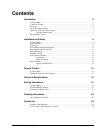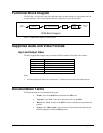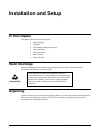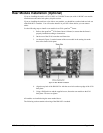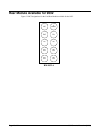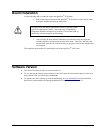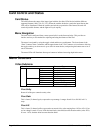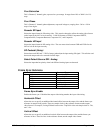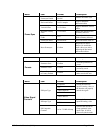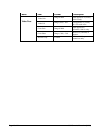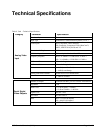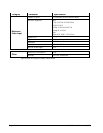
9032 Owner’s Manual •
••
• (V 2.0) Page 13 of 24
Proc Saturation
This is Chroma (C channel) gain, expressed as a percentage. It ranges from 0.0% to 200.0% in 0.1%
steps.
Proc Phase
This is Chroma (C channel) phase adjustment, expressed in degrees, ranging from –360 to +360 in
steps of one degree.
Decoder SD Input
Selects the input format for SD analog video. This must be changed to reflect the analog video format
on the input for the 9033 to lock correctly. Valid SD formats are GBR, Component SMPTE,
Component MII, Component Betacam, Component Y/C, and Composite.
Decoder HD Input
Selects the input format for HD analog video. The user must select between GBR and YPbPr for the
9033 to lock to the input correctly.
SD Pedestal (Setup)
Selects between 0 IRE and 7.5 IRE of setup (pedestal)on the input analog SD signal. This tells the card
how much setup needs to be removed from the input.
Select Default Source SDI / Analog
Selects the input that has priority when both SDI and Analog inputs are detected.
Frame Sync Submenu
Menu Structure Parameter Type
Enbl Frame Sync Enable
HOS Horizontal Offset
VOS Vertical Offset
LATL Line Latency
LATF Field Latency
ADLY Audio Delay
FS
RSET Frame Sync Reset
Frame Sync Enable
Enables the frame sync. If disabled the output video timing matches the input video timing.
Horizontal Offset
Allows the user to specify an additional horizontal offset between the output video and the frame sync
reference in sample clock periods. These are sample clocks in the reference format, not the output
video format. For example, if using SD black burst to time 720p59.94 video each sample clock is 37ns,
not 13.5ns.
Vertical Offset
Allows the user to specify an additional vertical offset between the output video and the frame sync
reference in lines. These are lines in the reference format, not the output video format.



